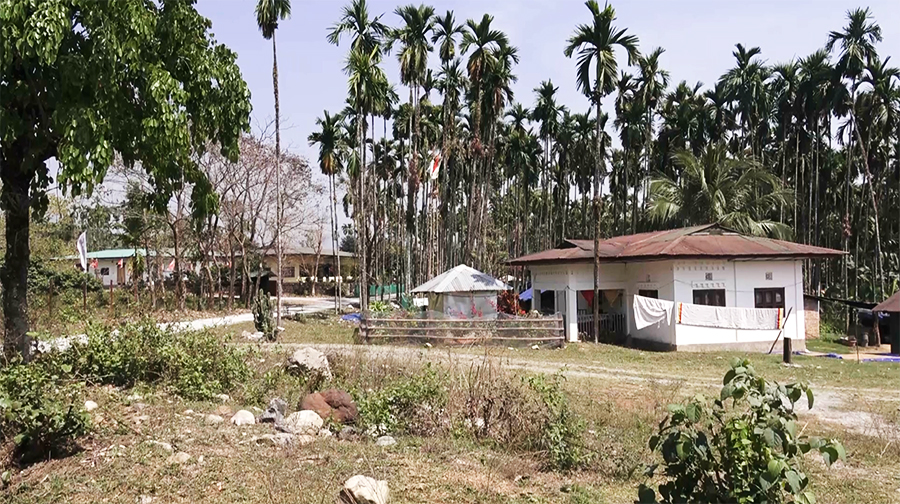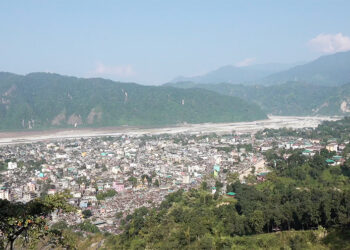 Almost everyone in Bhutan has access to improved water sources, but only 63 per cent have 24-hour access to drinking water. This was highlighted in a 2020 article by the former Resident Representative of UNDP Bhutan. Five years on, some still face water shortages in a water-rich country.
Almost everyone in Bhutan has access to improved water sources, but only 63 per cent have 24-hour access to drinking water. This was highlighted in a 2020 article by the former Resident Representative of UNDP Bhutan. Five years on, some still face water shortages in a water-rich country.
Yarpheling village in Sarpang is home to around 140 households.
 Jerrycans and drums line the water taps, a common sight due to water shortages. Increasing population, coupled with drying water sources, is amplifying the problem.
Jerrycans and drums line the water taps, a common sight due to water shortages. Increasing population, coupled with drying water sources, is amplifying the problem.
Binata Gurung, a shopkeeper said “Running a shop without a steady water supply is challenging. The supply is inconsistent—sometimes it comes in the evening but not in the morning, and other times, it’s available for just two to three hours in the morning. This issue needs urgent attention from the authorities concerned.”
Sanchu Maya Subbha, another shopkeeper said “Water is sufficient in summer, but it becomes a challenge in winter, especially since I have rented out my house. If used wisely, the supply can be enough, but wastage makes it inadequate.”
Likewise, Phul Maya Rai said “In the past, when there were fewer households, the water supply was sufficient for everyone. But with more households now, distribution has become uneven—when one home gets water, another often goes without. It would be ideal if everyone received enough, but right now, we are left uncertain.”
The gewog has been trying to pipe water from a new source for a few years now. A survey was also done in 2023.
Jigme, Singye Gup said “A potential solution lies about 13 kilometers away at the Samatung River, which has a steady water supply throughout the year. This appears to be the only viable long-term solution to address the shortage.”
But, as usual, there is no money. The gewog has now submitted a proposal in the 13th Five-Year Plan.
Karma Wangdi, Gelephu
Edited by Tandin Phuntsho







